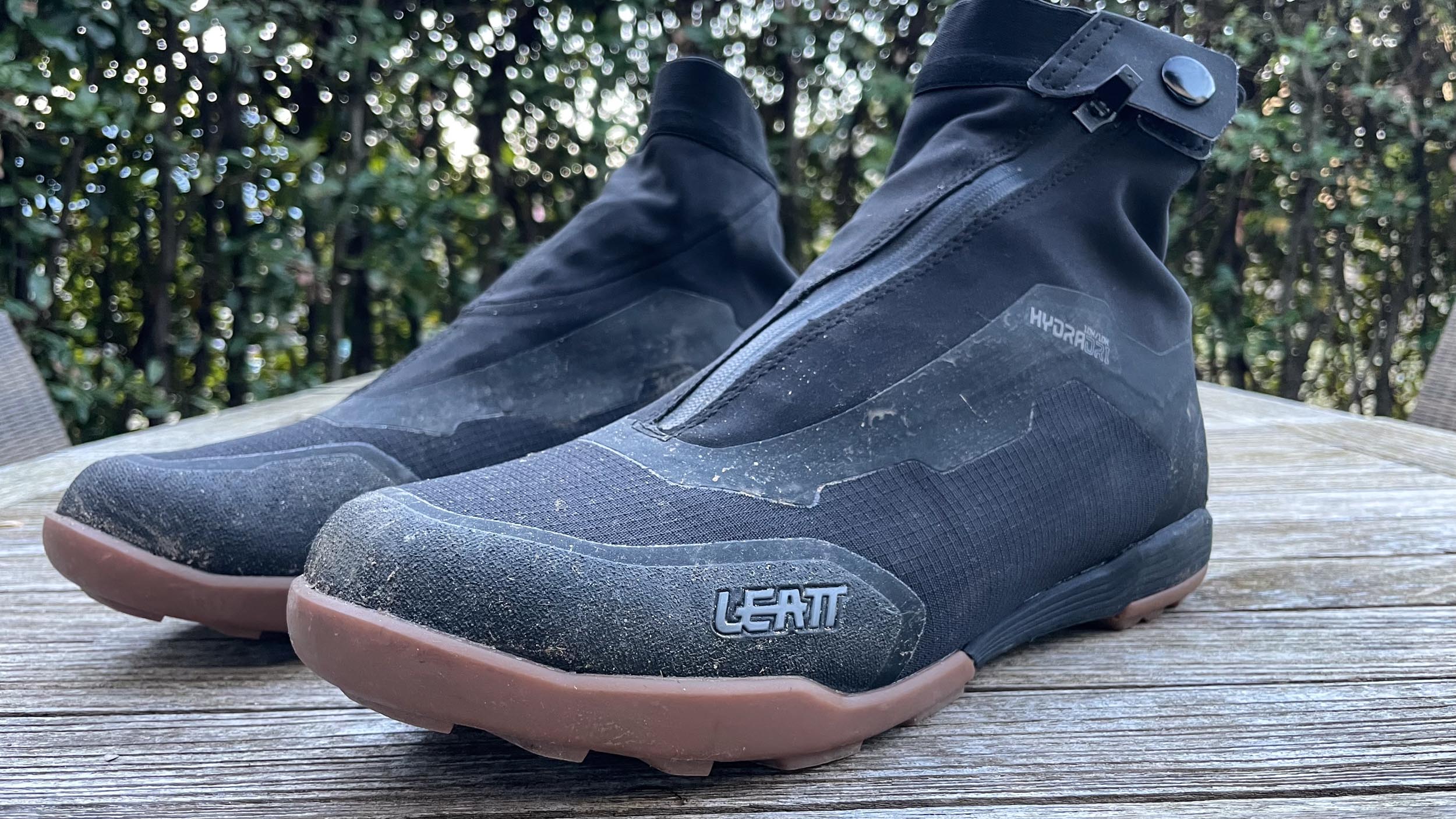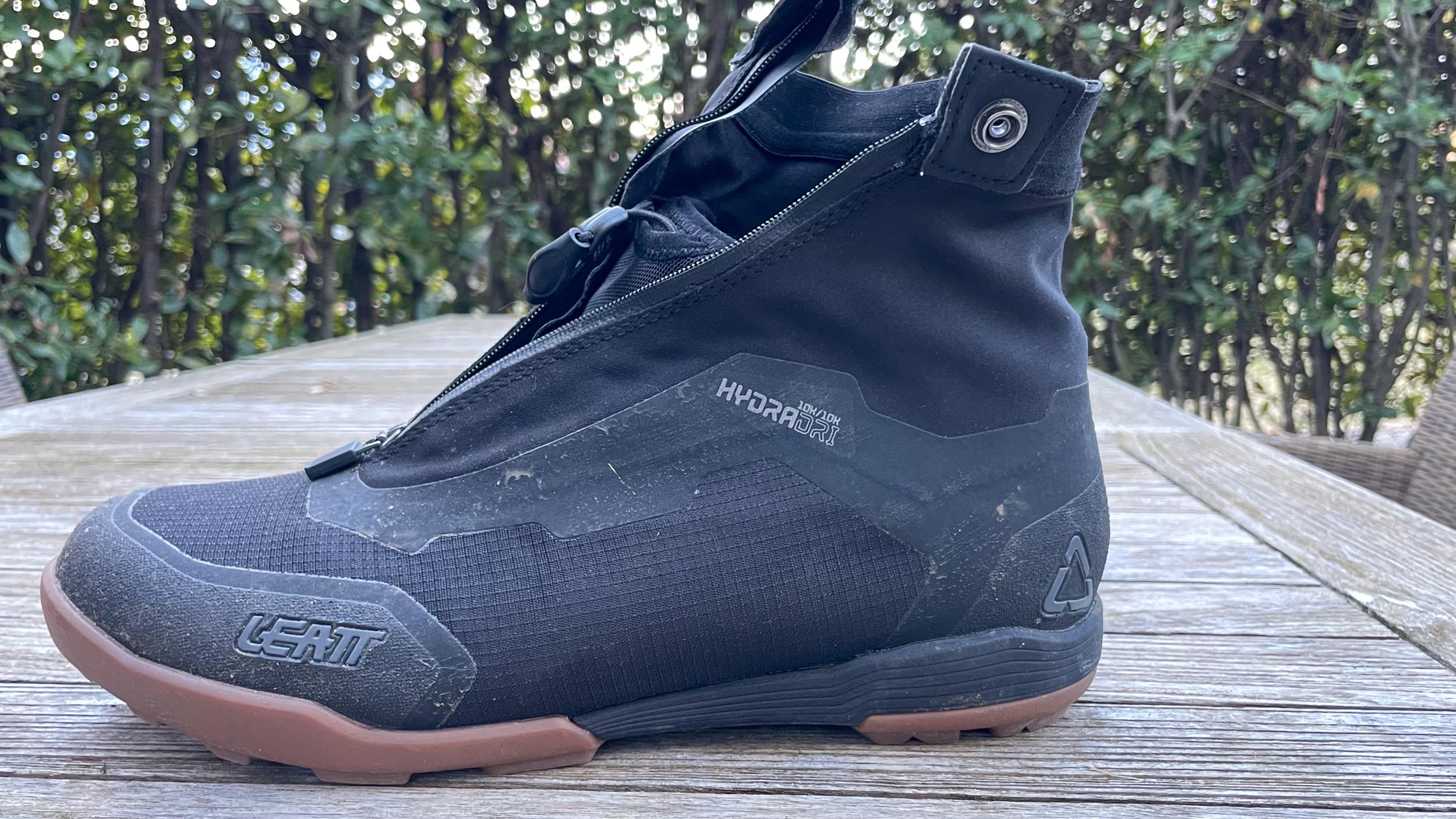

Last November, Leatt introduced its new HydraDri 7.0 Clip winter shoes. We had a pair sent to us, and after waiting for the cold weather to arrive, we were finally pleased: the frigid temperatures of the past few weeks created ideal conditions for this test to take place. Leatt describes these shoes as suitable for all seasons, since their primary intention is to keep the foot dry but, given their construction, they are for all intents and purposes a product best used in temperatures below 8°.


One of the main features of these shoes is the Hydradri membrane, which offers 10K/10K of waterproof protection but without being the classic neoprene cover that makes your foot sweat. I am always skeptical when I see tall winter shoes, because often the part around the ankle is neoprene and creates a warm but moist microclimate inside the shoe. A kind of warmth obtained from the greenhouse effect of the foot sweating. Unfortunately, such sweat freezes when you stop pedaling, typically downhill, the coldest part of any winter ride.
However, this is not the case with the Leatt HydraDri 7.0: I tried them both with cotton summer socks and with my favorite cold-weather socks, namely the Fox Defend Winter I mentioned in this article. In neither case did I find my foot soaking wet from my own sweat. Speaking of socks, since the Fox ones are rather thick, it should be mentioned that I was able to wear the shoes by choosing the size I usually use, 42.5EU. The fit is tight but stretchy, so with a bit of force you can zipper them up.
More problematic, however, is inserting the foot into the bootie, which reaches up to above the heel. Since this is soft, you will need to pull the special tab to avoid creating annoying creases, particularly if you are wearing thick socks. The lace-up closure of the bootie itself is quick and, most importantly, creates no pressure points on the top of the foot, just as the zipper does not once closed. The lace is concealed in a special pocket.
The top of the shoe goes to close around the ankle by means of a snap button that requires a fair amount of force to put in place. As much as Leatt says this serves to prevent water from entering the shoe, it is necessary to combine the shoes with a pair of waterproof pants (I have a pair of Leatt’s that I will show you shortly) and that, above all, are long enough to always cover the part of the shoe that wraps around the ankle, because that is where water gets in anyway, from above.
The Leatt HydraDri 7.0 Clips also exist in a flat shoe version, however, it must be said that the ones under test, with the quick release, have a very well-made sole. First because the sled where the cleat hooks is very long and can be positioned far back, which I always do so I don’t go to fatigue my calf on descents. Secondly because the engagement/disengagement operation is done very easily even with Crank Brothers pedals, which are known to have a lower cleat than Shimano. I put on a shim, and from the first ride I never had a problem. Finally, the grip of the compound is very good even in wet conditions.
It is worth noting that, despite the fact that the Leatt HydraDri 7.0 Clips have the cleat attachment hole, no cold air or water penetrates from there thanks to a plastic insulation layer. Having found myself pushing my bike in the snow, I can confirm that these shoes are waterproof. As for the cold, as mentioned in the opening, the big advantage of these Leatts lies in the breathable material with which they are made: it keeps the foot warm and above all dry without making it sweat too much and without keeping all the moisture inside the shoe. Watch out, though: they don’t work miracles. If the temperature moves around zero Celsius, after a couple of hours I started to notice that my feet were getting cold. Then again, it wasn’t just the feet that were cold. The only one is to have a heated insole like this one from Decathlon, if you want to go on long rides even in winter without too much worry.
The heel and toe are reinforced to protect your feet from impacts with rocks and stones lifted from the wheels.
When pedaling, the stiffness of the sole and the flexibility of the instep part are noticeable, thanks to the soft, edgeless inner bootie. Of all the winter high shoes I have tried, these are certainly the most comfortable even when new, before they adjust to the shape of the foot.
Today Crankbrothers is launching two new sets of handguards dubbed the Guardian Universal and Guardian…
This past Fall I had an opportunity to test the new Transition Sentinel and was…
If you’ve removed all of your volume reducers but still aren’t getting enough travel on…
After close to a year's time spent aboard the newly updated MY25 Fox 38, it's…
Last Winter Push Industries unveiled a new shock dubbed the SV Eight. The new damper…
In July I attended the launch of a new bike which I've given very high…